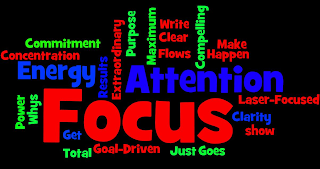Detoxification is a broad term that encompasses many different ways
of cleansing the body's internal systems and organs. Major methods
include chelation therapy (EDTA therapy), colonic irrigation,
nutritional supplementation, several varieties of herbal medicine,
dietary therapy, fasting, juicing, probiotics, hydrotherapy, sauna and
exercise.
Four main types of toxins are addressed through detoxification:
heavy metals, chemical toxins, microbial compounds, and byproducts from
protein metabolism. Advocates believe detoxification cleanses the body,
clears the skin, enhances the senses, helps weight loss, improves
fertility, improves flexibility, increases vitamin and mineral
absorption, purifies, reduces blood fat levels, reduces symptoms of
toxicity, rejuvenates, rests organs, and slows aging.
Organs that perform detoxification functions for the body include
the skin, liver, intestines and kidneys. Many methods of detoxification
focus on strengthening or supporting the natural processes of these
organs.
For many methods of detoxification there is little or no evidence
from clinical trials to enable recommendations for or against their use.
See individual monographs on this site for reviews of the available
evidence.
Theory
The various modalities of detoxification are thought to support the
body's natural systems of detoxification or augment them. These systems
and their related detoxification functions include the skin
(perspiration), the liver (filtration of blood, secretion of bile and
enzymes), the intestines (mucosal detoxification, excretion of feces),
and the kidneys (excretion of urine).
Supplementation is
intended to provide vital nutrients such as vitamins and minerals that
support and stimulate the body's own detoxification mechanisms. One of
the chief targets of nutritional supplements for detoxification is the
liver.
Herbal approaches
use "detoxifying herbs" to support the body's detoxification systems,
bind with toxins to aid in their excretion, or aid the breakdown of
toxins. Traditions of herbal medicine differ in their beliefs of how
herbs aid detoxification. Western approaches use herbs for their
biochemical properties, while Eastern approaches think in terms of the
energetic qualities of the herbs.
Foods and diet: A
cleansing diet is believed to relieve the burden on the body's
detoxification systems by not introducing new toxins to be processed,
and by allowing the body's natural mechanisms to work more efficiently
on clearing accumulated toxins. Specific foods such as cabbage,
broccoli, Brussels sprouts, oranges, tangerines, and caraway and dill
seeds are believed to aid the liver in its role of detoxification.
Fasting: In
fasting the body utilizes non-essential tissue (e.g., fat, digestive
enzymes, muscle fibers, and glycolytic enzymes) for fuel. In
naturopathic medicine fasting is regarded as a rapid method of
eliminating wastes and enhancing the healing processes of the body.
Fasting is thought to aid the release of fat-soluble toxins from the
body.
Hydrotherapy: Hot
water is believed to stimulate blood circulation and thereby stimulate
filtration through the liver. It also works by excretion of toxins
through perspiration.
Probiotics:
Probiotics are thought to aid the detoxification functions of the colon
by preserving the intestinal lining's protective barrier and inhibiting
harmful bacteria that produce toxins in the colon.
Sauna: Like
hydrotherapy, heat is believed to stimulate blood circulation and
thereby stimulate filtration through the liver. It also works by
excretion through perspiration.
Colonic irrigation:
The basis for colonic irrigation (flushing the colon with water,
sometimes accompanied by herbs) is the belief that toxins accumulate in
the lining of the intestinal tract and penetrate into the bloodstream
from there. Colonic irrigation is believed to directly flush these
toxins out.
Chelation therapy:
Chelation therapy is believed to draw heavy metals out of the cells and
tissues for filtration by the liver and kidneys and excretion from the
body.
Exercise: Exercise
is considered to aid detoxification by virtue of the increased pumping
of blood and lymph through the body's various filtration systems, as
well as release of toxins through perspiration.
Synonyms
Ayurveda, bowel cleansing, chelation therapy, colon, colon cleanse,
colon hydrotherapy, colon therapy, colonic irrigation, colonics,
constipation, detox baths, EDTA therapy, enema, fasting, food allergies,
gastrointestinal tract detoxification, heavy metal cleanse, herbal
detoxification, herbs, high colonics, hormonal and skin care programs,
hydrotherapy, intestinal cleanse, intestinal therapy, juice fasting,
juice therapy, juicing, liver cleanse, lymph drainage, macrobiotic diet,
nutrition, parasite cleanse, probiotics, rotation diet, skin care, skin
cleanse, specific carbohydrate diet, supplements, toxic minerals,
toxins, vitamins, water fasting, weight loss, wellness.
Not included in this review: Alcoholism and drug abuse detoxification.
Safety
The safety of the various approaches to detoxification varies
depending on the methods being used and the health status of the
individual. Possible risks of detoxification regimes by all people regardless
of their health status include dehydration or depletion of essential
nutrients. Professional guidance is recommended for anyone seeking a
serious detoxification program. Unsupervised detoxification should not be attempted by people who
have an acute or serious medical condition without medical consultation. Caution is advised in those taking prescription medications, as
blood levels of drugs may be reduced by detoxification. This is
especially a concern when herbs are being used as part of a
detoxification regime. Consult with your healthcare professional first.
An effective detoxification regime may result in temporary side
effects such as headaches and other aches and pains, fatigue, skin
eruptions, emotional irritability, gas, tight muscles, yawning,
temporary stopping of menstruation, and temporary constipation or
diarrhea, as toxins are released from the body.
See the Natural Standard monographs on individual methods of detoxification for details about safety and precautions.
Evidence
These uses have been tested in humans or animals. Safety and
effectiveness have not always been proven. Some of these conditions are
potentially serious, and should be evaluated by a qualified healthcare
provider.



